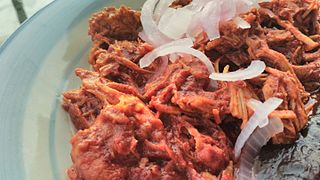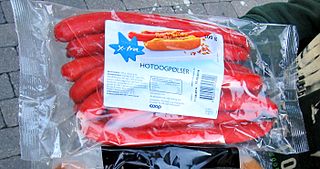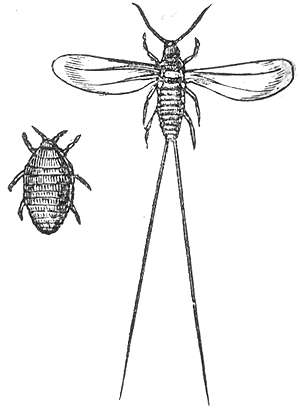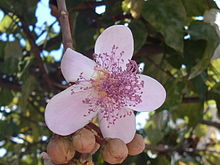
Indigo dye is an organic compound with a distinctive blue color. Indigo is a natural dye extracted from the leaves of some plants of the Indigofera genus, in particular Indigofera tinctoria. Dye-bearing Indigofera plants were commonly grown and used throughout the world, particularly in Asia, with the production of indigo dyestuff economically important due to the historical rarity of other blue dyestuffs.

Food coloring, or color additive, is any dye, pigment, or substance that imparts color when it is added to food or drink. They can be supplied as liquids, powders, gels, or pastes. Food coloring is used in both commercial food production and domestic cooking. Food colorants are also used in a variety of non-food applications, including cosmetics, pharmaceuticals, home craft projects, and medical devices. Colorings may be natural or artificial/synthetic.
Carmine – also called cochineal, cochineal extract, crimson lake, or carmine lake – is a pigment of a bright-red color obtained from the aluminium complex derived from carminic acid. Specific code names for the pigment include natural red 4, C.I. 75470, or E120. Carmine is also a general term for a particularly deep-red color.

Annatto is an orange-red condiment and food coloring derived from the seeds of the achiote tree, native to tropical parts of the Americas. It is often used to impart a yellow to red-orange color to foods, but sometimes also for its flavor and aroma. Its scent is described as "slightly peppery with a hint of nutmeg" and flavor as "slightly nutty, sweet and peppery".

The ackee, also known as acki, akee, or ackee apple, is a fruit of the Sapindaceae (soapberry) family, as are the lychee and the longan. It is native to tropical West Africa. The scientific name honours Captain William Bligh who took the fruit from Jamaica to the Royal Botanic Gardens in Kew, England, in 1793. The English common name is derived from the West African Akan akye fufo.

Hair coloring, or hair dyeing, is the practice of changing the color of the hair on humans' heads. The main reasons for this are cosmetic: to cover gray or white hair, to alter hair to create a specific look, to change a color to suit preference or to restore the original hair color after it has been discolored by hairdressing processes or sun bleaching.

Recado rojo or achiote paste is a popular blend of spices. It is now strongly associated with Mexican and Belizean cuisines, especially of Yucatán and Oaxaca. The spice mixture usually includes annatto, oregano, cumin, clove, cinnamon, black pepper, allspice, garlic, and salt. The annatto seeds dye the mixture red, and impart a distinctive red-orange color to the food.

Cochinita pibil is a traditional Yucatec Mayan slow-roasted pork dish from the Yucatán Peninsula. Preparation of traditional cochinita involves marinating the meat in strongly acidic citrus juice, adding annatto seed, which imparts a vivid burnt orange color, and roasting the meat in a píib while it is wrapped in banana leaf.

Lipstick is a cosmetic product used to apply coloration and texture to lips, often made of wax and oil. Different pigments are used to produce color, and minerals such as silica may be used to provide texture. The use of lipstick dates back to early civilizations such as Sumer and the Indus Valley Civilisation, and was popularized in the Western world in the 16th century. Some lipsticks contain traces of toxic materials, such as lead and PFAS, which prompted health concerns and regulation.

Yagua are an indigenous people in Colombia and northeastern Peru, numbering approximately 6,000. Currently, they live near the Amazon, Napo, Putumayo and Yavari rivers and their tributaries. As of 2005, some Yagua have migrated northward to Colombia, near the town of Leticia.

Amaranth, FD&C Red No. 2, E123, C.I. Food Red 9, Acid Red 27, Azorubin S, or C.I. 16185 is a modified red azo dye used as a food dye and to color cosmetics. The name was taken from amaranth grain, a plant distinguished by its red color and edible protein-rich seeds.

Rød pølse is a type of brightly red, boiled pork sausage very common in Denmark. Since hot dog stands are ubiquitous in Denmark, some people regard røde pølser as one of the national dishes. They are made of the Vienna type and the skin is colored with a traditional red dye (carmine).

Capsicum baccatum is a member of the genus Capsicum, and is one of the five domesticated chili pepper species. The fruit tends to be very pungent, and registers 30,000 to 50,000 on the Scoville heat unit scale.

The history of cosmetics spans at least 7,000 years and is present in almost every society on earth. Cosmetic body art is argued to have been the earliest form of a ritual in human culture. The evidence for this comes in the form of utilised red mineral pigments including crayons associated with the emergence of Homo sapiens in Africa. Cosmetics are mentioned in the Old Testament—2 Kings 9:30 where Jezebel painted her eyelids—approximately 840 BC—and the book of Esther describes various beauty treatments as well.

Cosmetics ingredients come from a variety of sources but, unlike the ingredients of food, are often not considered by most consumers. Cosmetics often use vibrant colors that are derived from a wide variety of sources, ranging from crushed insects to rust.
Bixin is an apocarotenoid found in the seeds of the achiote tree from which it derives its name. It is commonly extracted from the seeds to form annatto, a natural food coloring, containing about 5% pigments of which 70–80% are bixin.

Anthocyanins, also called anthocyans, are water-soluble vacuolar pigments that, depending on their pH, may appear red, purple, blue, or black. In 1835, the German pharmacist Ludwig Clamor Marquart named a chemical compound that gives flowers a blue color, Anthokyan, in his treatise "Die Farben der Blüthen". Food plants rich in anthocyanins include the blueberry, raspberry, black rice, and black soybean, among many others that are red, blue, purple, or black. Some of the colors of autumn leaves are derived from anthocyanins.

The cochineal is a scale insect in the suborder Sternorrhyncha, from which the natural dye carmine is derived. A primarily sessile parasite native to tropical and subtropical South America through North America, this insect lives on cacti in the genus Opuntia, feeding on plant moisture and nutrients. The insects are found on the pads of prickly pear cacti, collected by brushing them off the plants, and dried.

Madurkathi mats, or madur, are mats woven in West Bengal from a reed called madur kottir, or madurkathi, a sedge of the family Cyperaceae. Madur mat-making is a long-standing tradition, centred on the Medinipur district, and is an important part of the rural economy. The mats are woven mainly by weavers of the Mahishya caste, and predominantly by women. This cottage industry contributes significantly to village household income.



























